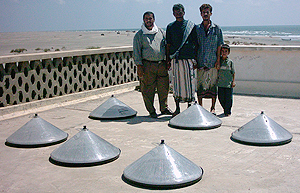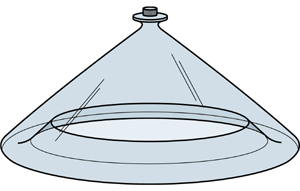In many parts of the world access to clean water is a key problem. Water purification is the process of removing undesirable chemical and biological contaminants from raw water. The goal is to produce water fit for human consumption or other specific purposes. In general the methods used include physical process such as filtration and sedimentation, biological processes such as slow sand filters or activated sludge, chemical process such as flocculation and chlorination and the use of electromagnetic radiation such as ultraviolet light. The purification process of water may reduce the concentration of particulate matter including suspended particles, parasites, bacteria, algae, viruses, fungi; and a range of dissolved and particulate material derived from the minerals that water may have made contacted after falling as rain.
 Water purification can be an energy intensive process and there has been a long quest for effective purification methods. For example boiling water, capturing and condensing the steam, requires an energy input required to boil water. If the energy comes from a fuel like oil or coal there is the addition of carbon emissions from burning the fuel. It also would tie the need for water to consumption of a nonrenewable resource like fossil oil or coal. The Watercone is a very simple way to purify water that uses sunlight as the energy to boil the water.
Water purification can be an energy intensive process and there has been a long quest for effective purification methods. For example boiling water, capturing and condensing the steam, requires an energy input required to boil water. If the energy comes from a fuel like oil or coal there is the addition of carbon emissions from burning the fuel. It also would tie the need for water to consumption of a nonrenewable resource like fossil oil or coal. The Watercone is a very simple way to purify water that uses sunlight as the energy to boil the water.

The cone is placed over a pan containing water. The pan should be black for best heat absorption. The cone has a trough along the inside rim to catch water. Water evaporates from the pan, moves upward, is caught on the inside of the cone, then drips down to the trough. So simple.
The WATERCONE(r) system can be referred to as a one step water condensation process with a 40% effectiveness degree (GTZ Germany). Based on evaporation levels of 8.8 Liters per square meter (average solar irradiation in Casablanca, Morocco), the WATERCONE(r) (with a base diameter of 60 - 80 cm) yields between 1.0 to 1.7 Liters of condensed water per day (24 hours). The salty / brackish Water evaporates by way of solar irradiation and the condensation from that Water appears in the form of droplets on the inner wall of the cone. These droplets trickle down the inner wall into a circular trough at the inner base of the cone.
I like many things about this design. It is simple and easy to understand. However the implementation is made from PVC plastic, and it contributes to more plastic existing in the world. Pondering a different way to implement this design in my mind I see a glass cone rather than a plastic cone and perhaps it can be a little bigger.

Very simple idea, but not seen in practice
ReplyDelete